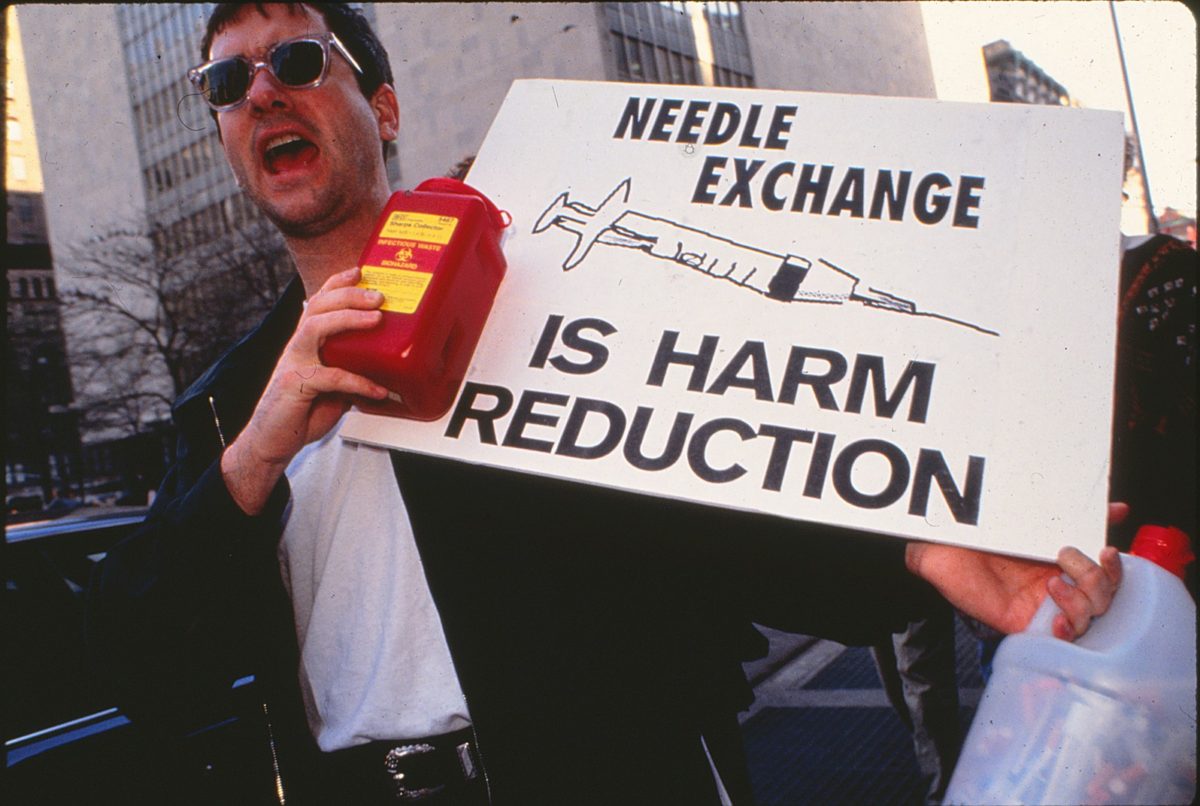The word ‘recovery’ is familiar to anyone who reads about, researches, or struggles with addiction. What it truly means and refers to, however, has been debated and discussed in many works in this digital age. Parsons professor of photography, Graham MacIndoe and Lang adjunct professor of Journalism + Design, Susan Stellin, curated an exhibit dedicated to redefining the word, and analyzing stigmas associated with substance users and addicts.

MacIndoe and Stellin collaborated as a photographer and reporter team, and the objective behind the exhibit that opened April 6, was a longtime idea in the making. “Susan and I have wanted for a long time to put together something that was more about recovery and harm reduction than about addiction. We’ve seen so many exhibits and so many media portrayals of addiction but we never get to see what comes after or in between. That was the impetus for us curating the exhibition,” said MacIndoe.
“Different people define recovery in different ways,” said Stellin, “There is a government definition, and how the U.S. federal agencies define it is different than what you see in countries like the United Kingdom. Not everyone defines recovery as a complete abstinence from all substance use. There are also definitions that try to encompass things about your life that go beyond just quitting the usage of drugs or alcohol, what you achieve as far as wellness, having a job, reconnecting with family and all of those intangible things.”

Along with eleven other contributing artists and photographers to the exhibition, MacIndoe and Stellin included their own photographs, conducted interviews with subjects who lived through challenges associated with drug addiction or incarceration. To find contributors, the curators used social media and work of mutual colleagues. “Susan and I were already working on a project with people who were in recovery, so we used that as a starting point. We then asked around to other people, put an open call out on social media, and reached out to friends who worked in that area. They recommended others, and we then had a whole bunch of people who were working on diverse projects,” said MacIndoe.
One of the main goals for the exhibit was to convey storytelling executed and documented by those familiar with recovery processes and addiction. “It was important to us that it wasn’t just done by journalists or people who parachuted in taking pictures. It was people who had close attachments to the subject matter. Mostly, these people in the exhibit are in recovery themselves, and they’ve been working on long term projects of people in recovery, “ MacIndoe said.
The exhibition also includes four projects conducted by students in classes taught by MacIndoe and Julia Gorton, an assistant professor of communications at Parsons.

Artwork in the exhibit will be showcased at the Arnold and Sheila Aronson Galleries within Parsons School of Design at 66 Fifth Ave in New York City. Stellin spoke of how the university and purpose of the show ultimately coincide. “One of the goals of this was to bring this topic into the university setting to spark conversations. We are doing the event around a topic that tends to live in the shadows. Even when we talk about it, the discussion is in a very stigmatized way, so really our goal was to move beyond discussions of the problems of addiction, to solutions and how it affects people not only in recovery themselves, but also families and communities that are wrestling with this.”
MacIndoe and Stellin have worked together on many projects, uniting their photographs and interviews, conducting talks, and have also written a memoir that documented MacIndoe’s personal journey related addiction and recovery.
The exhibit will be open for student, faculty and public viewers through Saturday April 20 at its Fifth Avenue and 13th Street location. Gallery hours are noon to 6 p.m. daily, with extended hours on Thursdays until 8 p.m.







